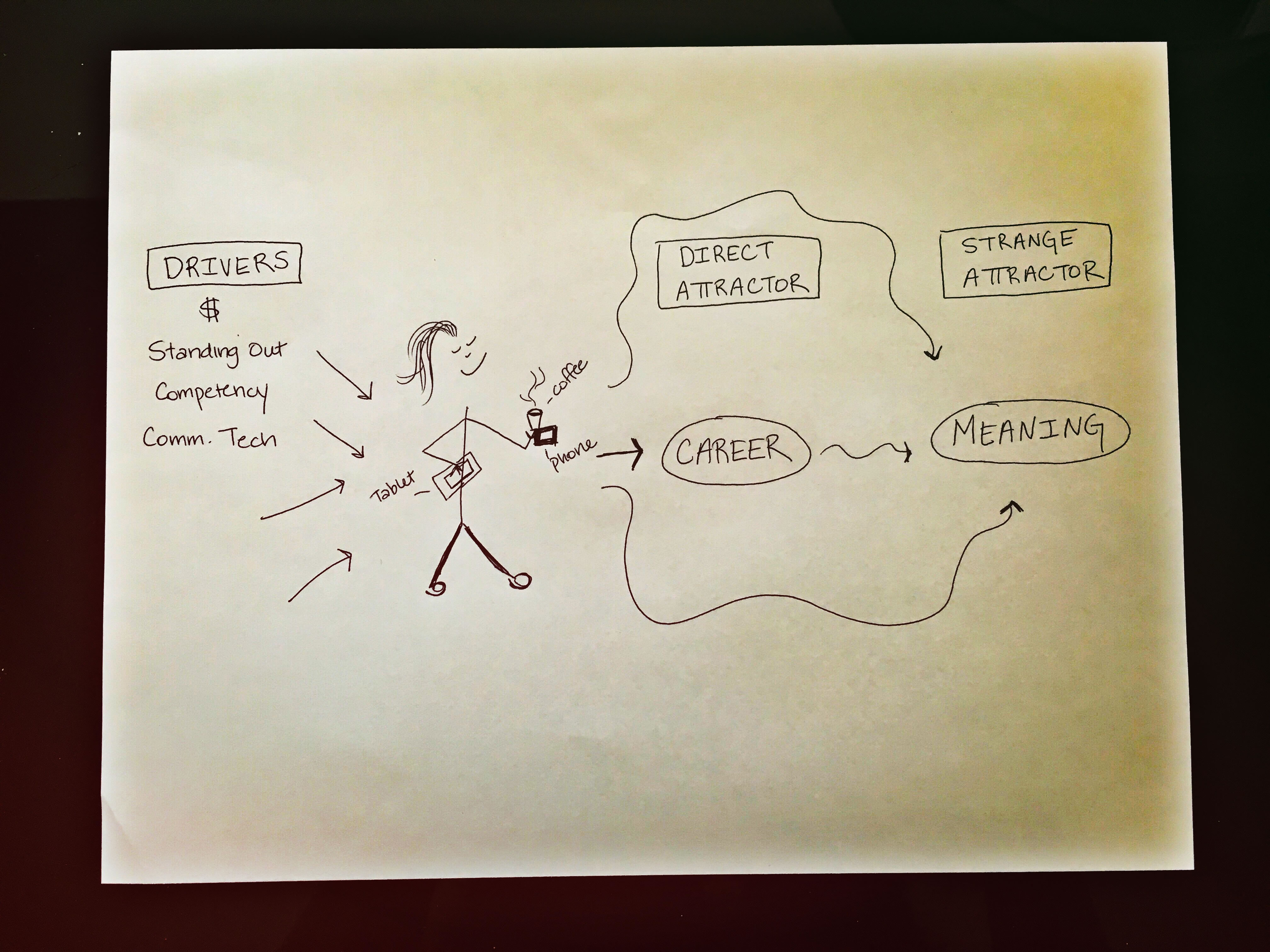I think I very audibly sighed into my overpriced latte when a recent keynote speaker at Campus Technology’s Boston-based conference waxed poetic about how MOOCs and online learning are innovations changing everything in education. “Not this again,” I cynically mumbled to myself. “Not someone relatively new at philosophizing about education that’s discovered Khan Academy.”
Doing a complete 180º from yesterday, I practically choked on my overpriced now-macchiato this morning when keynoter Stephen Downes, program leader of Learning and Performance Support Systems for the National Research Council of Canada, almost verbatim mimicked my thoughts out loud: “The things most people think are innovations or ‘disruptors’ are not these things at all,” he explained. “If you take a Physics lecture and put it online that’s not transformative. What’s transformative is what happens when you realize the Physics lecture is not what students are really there for in the first place.”
Downes’ gist of his presentation was that keeping the same mentality about what students need from postsecondary education and why they need it is never going to bring about true innovation and transformation. In order to bring about these buzz words so commonly used in the education arena these days, educators and stakeholders must first understand the nature of prediction and the tools needed to predict the future.
Prediction and the Future
“People say predicting the future is impossible, but we do it every day,” noted Downes. “I predict perennials will bloom again next spring. I predict barren trees this winter will bloom in the spring. I predict the corner bar will fill up around happy hour. These are all predictions made with a fair amount of certainty that will probably come true. However, change is the wildcard!”
According to Downes, what determines the success of one’s predictions is how well they understand and perceive change. For example, he said, a person might go to a tropical island because they believe the island is unchanging: no storms and sunny weather. But in reality, even if the scene doesn’t perceptibly change, it has completely changed: the water is cycled anew as is the air, et cetera.
“What you see often depends on what you’re looking for,” he said. “What you’re looking for often depends on what you currently value.”
Another aspect of change that’s critical to consider when trying to predict the future is in its two forces: drivers and attractors.
Drivers and Attractors of Change
Downes explained that drivers are what push someone toward an action, like a need. Attractors are what pull someone toward change, like a desire. Drivers also push someone from the past, while attractors pull someone toward the future. Resistance impedes drivers, while inertia impedes attractors.
“Many changes in technology that changed learning were the result of drivers; for example, a need to write and publish led to print technology, and a need for networks led to electronic technology. These came from outside education and impacted how we manage and deliver education, but they also reflected changes in what we value in education.”
Yet, he also cited many changes in technology that didn’t change learning, such as: TV, video and overhead projectors; portable classrooms; learning management systems; clickers; and Second Life.
“The problem is when you take the Physics class and put it in Second Life or take the classes’ information and deliver it via video, it’s still the same class,” he emphasized. “So we have to look at MOOCs and online learning similarly, asking the question: are these formats truly candidates for disruption? I would argue ‘no,’ with the backing from a quote by Steve Kolowich that says, ‘Stalled efforts to push MOOCs through the institutional membrane that surrounds higher-education credentialing have cast doubt on whether large-scale free courses will end up disrupting anything.’”
Downes also gave the example of Microsoft’s vision for educational transformation, which he said encompasses the laundry list of: learning communities, teacher capacity, efficient schools, personalization, physical learning environments, and better curriculum and assessment.
“I don’t think anyone wakes up in the morning and goes ‘I really need a learning community today,’ or ‘gosh I really desire an efficient school.’” In other words, these abstract concepts are not transformative because they are simply new twists of the same existing systems, restyled solely for the purpose of keeping the existing system in place without confrontation.
So now that we know what isn’t innovating education, what is and why?
(Next page: Pondering education’s real innovations)
Guesstimating Today’s Drivers and Attractors in Higher Ed
Downes argued that to understand the real innovations in education and how education will transform in the future, we must look at how education has been transformed through the years based on changing drivers and attractors. In the past, these factors of change led to a progression from storytelling to apprenticeship to factory work to academia.
He also argued that true transformation happens with a moving, strange attractor. In other words, the attractor could be one basic concept that changes with time and leads to variations of change.
So what do these drivers and attractors look like today and what/who is driving it? Here’s my guess based on the trends I’m noticing:

- What’s influencing the factors of change for higher education? Students
- What are a student’s drivers? Cost, standing out from the crowd, competency, technology’s ability for communication
- What is a student’s direct attractor? A versatile, sustainable career
- What is a student’s strange attractor? A meaningful life
Though Downes did not, as in my case (and perhaps wisely), give his overall take on these factors of change, he did discuss how stakeholders can usher in the future with better success.
Reframing the Issues and Going from There
According to Downes, issues under consideration should be:
- Students must pay too much to study and learn
- Assessment is unreliable and (often) unfair
- Texts and resources are locked behind paywalls
- Content is poorly communicated
- Life as a student is incredible stressful
- Research studies are poorly designed
- Education science rarely replicates
Those truly interested in transformative innovation should also consider new models of deployment. For example, instead of focusing on just one driver for innovation, like low cost, focus on multiple drivers at the same time, like low cost and product release. Instead of targeting small groups first then mainstream, market to all at once and scale swiftly. Instead of implementing low cost, feature-poor technologies, experiment on popular platforms.
“Ultimately, the new institutional perspective should be ‘Don’t do things to people, do things with people and help people do things.’ Like Daniel Pink noted, institutions must provide opportunities for autonomy, mastery and purpose,” he said.
“Instead of seeing a course as a series of contents to be presented, try to see a course as a network of participants who find and exchange resources with each other,” he concluded. “An example of this is the cMOOC [connectivist MOOC], which has a structure seeded with existing open educational resources [OERs] and encourages participants to use their own sites to create or share resources via a mechanism—gRSShopper—for connection.”
In summation, perhaps education will truly experience transformative innovation when it goes from personalization for the student (educators define an ideal state and then reinforce with content, requirements, practice and assessment) to letting the student personalize for him/herself (he/she defines the desired state and then reinforces with practice, affordances, and opportunities to try out their learning with support).
What do you think are the drivers and attractors in higher education? What do you think will usher in transformative change, and are there any specific technologies that can help?
Get Downes’ presentation here: http://www.downes.ca/presentation/392
- 25 education trends for 2018 - January 1, 2018
- IT #1: 6 essential technologies on the higher ed horizon - December 27, 2017
- #3: 3 big ways today’s college students are different from just a decade ago - December 27, 2017

